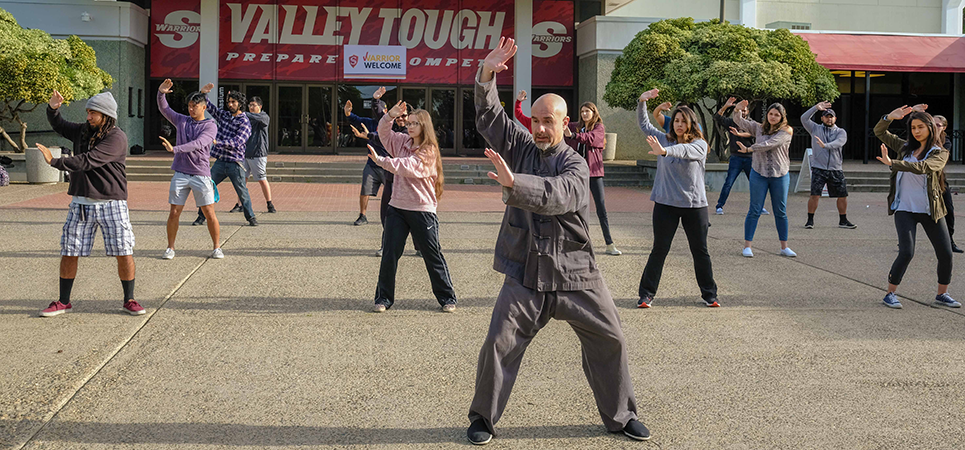
The slow, sinuous choreography of T’ai Chi has found a following at Stanislaus State, where students say the discipline lowers stress, improves academic focus and teaches the value of persistence.
“Rather than just going through motions, T’ai Chi teaches me to put effort into things, no matter the time it takes, or how insignificant it seems on the surface,” said Alec Austin, who took a spring semester T’ai Chi class at Stan State taught by Naser Ataee.
“I begin my days much more relaxed and more aware of my surroundings. I’ve noticed that my concentration and my focus in my classes have improved,” said Viridiana Baca, who took T’ai Chi as a kinesiology elective hoping to find a better life balance while carrying a heavy course schedule.
While students often tell him they thought T’ai Chi was just for the elderly, Ataee said, it is a martial art developed in rural China centuries ago for self-defense. “Moving slowly, the mind directs the body and with practice the mind and body become one. When speed is needed, the moves are much faster. The mind leads,” he said.
Many of his Stan State students initially took the class because it was a change of pace, something that sounded slightly exotic, said Ataee, who owns T’ai Chi Ch’uan Academy and filled in this spring for instructor Chuck Wagley. Wagley, a former student of Ataee’s, will return in the fall semester for 1-unit T’ai Chi classes offered at 8 and 9 a.m. on Mondays and Wednesdays.
“This has a lot of positive effects in flexibility and strength. But mostly it’s about de-stressing. This is an activity performed very quietly. You have 30 people shifting forward and shifting back. Nobody is talking,” Ataee said. “I think it creates harmony between people. Nobody’s judging. Everybody’s in unison. We all have different speeds in life, but everybody’s got to give a little in order to stay together.”
T’ai Chi is the ultimate in mono-tasking, he noted, complete concentration on doing a single thing well. “I have lived half of my life doing T’ai Chi,” he said. “Even brushing my teeth is done in that mode of not thinking of anything else.”
Student Paul Ardanuy, Jr., said friends who liked the class convinced him to take T’ai Chi, which teaches sequences of complex motions. “Each movement is continuous and flowing, never stopping, and is practical for the next movement. It feels like a beautiful dance that always moves forward,” he said. “When done correctly it can lead to a strong sense of self and grounds you.”
A student recovering from a car accident valued T’ai Chi as a low-impact workout. Another said the balance and stretching improved his regular workouts and sports.
“Tai-Chi isn’t just an art form, it’s also a life teaching experience that you can utilize in everything that you do in one’s life,” said student Vianca Briones. Watching the moves of martial artists like Jet Li, she said, “I realized how powerful T’ai Chi really is.”
“It is an internal martial art. Strength comes from the inside,” Ataee said. “In China they say one who practices T’ai Chi on a regular basis may develop a kind of strength that is like a steel bar wrapped in cotton.”